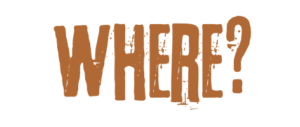 Ethiopia is an African nation bordered by Djibouti, Eritrea, Kenya, Somalia, South Sudan, and Sudan. Its population of 111 million is composed of several ethnic groups,
Ethiopia is an African nation bordered by Djibouti, Eritrea, Kenya, Somalia, South Sudan, and Sudan. Its population of 111 million is composed of several ethnic groups, 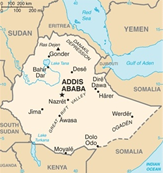 including Oromos (35%), Amharas (28%), Tigrayans (7%), Somalis (3%), and others. The country has long suffered violent territorial and political disputes between ethnic groups.
including Oromos (35%), Amharas (28%), Tigrayans (7%), Somalis (3%), and others. The country has long suffered violent territorial and political disputes between ethnic groups.
Ethiopia is the oldest independent country in Africa. It was ruled by an emperor until 1974, when a Marxist-Leninist military junta seized power and slaughtered political opposition. The regime was toppled in 1991 by the Ethiopian People’s Revolutionary Democratic Front (EPRDF), which established a democratic government where a fair amount of power was given to ethnic regional governments.
The EPRDF was a coalition government representing four regional parties: the Tigray Peoples Liberation Front (TPLF), the Amhara Democratic Party (ADP), the Oromo Democratic Party (ODP), and the Southern Ethiopian People’s Democratic Movement (SEPDM). The TPLF, which ruled the northern region of Tigray, dominated this coalition despite representing a small percent of the population. Their government fostered rapid economic growth and relative stability across Ethiopia. However, it was criticized for human rights abuses, corruption, and inequality. In 2018, the prime minister stepped down due to popular protests.
The Parliament appointed Abiy Ahmed, an ethnic Oromo who quickly won a Nobel Peace Prize for negotiating an end to longstanding territorial conflicts with neighboring Eritrea in the Tigray region. In 2019, Abiy merged the EPRDF coalition into the single ‘Prosperity Party’ in the hopes of bridging ethnic divisions, liberalizing politics, and centralizing Ethiopian governance. The TPLF refused to join Abiy’s party but remained in control of Tigray’s regional government. They resented Abiy’s deal with Eritrea and Tigrayans’ loss of power in his new government.
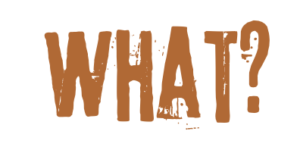 Political tensions between Abiy’s Prosperity Party and the TPLF persisted into 2020 – a federal election year for Ethiopia. Abiy received Parliamentary approval to postpone
Political tensions between Abiy’s Prosperity Party and the TPLF persisted into 2020 – a federal election year for Ethiopia. Abiy received Parliamentary approval to postpone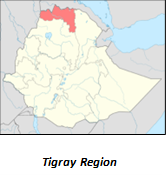 elections due to the onset of the coronavirus, which meant that he would remain in power unopposed until new elections would finally be held. The TPLF accused him of an authoritarian power grab and held regional elections in Tigray as an act of defiance. Abiy declared the Tigrayan election illegal and cut funds to Tigray’s government.
elections due to the onset of the coronavirus, which meant that he would remain in power unopposed until new elections would finally be held. The TPLF accused him of an authoritarian power grab and held regional elections in Tigray as an act of defiance. Abiy declared the Tigrayan election illegal and cut funds to Tigray’s government.
On November 4, 2020, anger and polarization turned to violence. TPLF forces overran an Ethiopian military base, allegedly to steal weapons. Prime Minister Abiy Ahmed ordered swift military retaliation. Ethiopian armed forces, aided by ethnic Amhara regional militias and troops from neighboring Eritrea, launched an offensive against the TPLF in Tigray within days.
There have been credible reports of crimes against humanity and civilian massacres perpetrated from all sides of the conflict against ethnic Tigrayan, Oromo, Amhara, Somali, and Gedeo civilians. Human rights groups are particularly concerned about a genocide of the Tigrayan people.
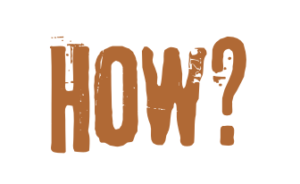 It has been difficult to gather information about atrocities in Tigray because of early telecommunications blackouts and severe restrictions on media access. Widespread disinformation wreaked havoc on international narratives. In 2021, credible reports began to emerge with evidence that the Ethiopian military and its allies were systematically eradicating the Tigrayan people. Media reports cited increasing hate speech and incitement to violence, referring to Tigrayans as ‘daylight hyenas’ or ‘unfamiliar others.’ The patriarch of Ethiopia’s Orthodox Church, Abune Mathias, smuggled a video out of the country in which he declares the ongoing violence to be a genocide.
It has been difficult to gather information about atrocities in Tigray because of early telecommunications blackouts and severe restrictions on media access. Widespread disinformation wreaked havoc on international narratives. In 2021, credible reports began to emerge with evidence that the Ethiopian military and its allies were systematically eradicating the Tigrayan people. Media reports cited increasing hate speech and incitement to violence, referring to Tigrayans as ‘daylight hyenas’ or ‘unfamiliar others.’ The patriarch of Ethiopia’s Orthodox Church, Abune Mathias, smuggled a video out of the country in which he declares the ongoing violence to be a genocide.
As of May 2021, thousands of Tigrayans have been massacred and over 2 million people have been internally displaced. More than 500 women or girls have reported that they have been victims of rape in Tigray, which is an extremely low estimate given the lack of available health services and the stigma surrounding rape in the region. Survivors describe being drugged, held hostage, and gang-raped by Amhara, Eritrean, and Ethiopian forces, who tell them that they are ‘cleansing the Tigrayan bloodlines.’
Tigrayans have also been cut off from essential services for over six months. There is a severe impending famine due to forced displacement, the destruction of essential infrastructure, and the government’s denial of access for food and other humanitarian aid to the region. The United Nations estimates that 4.5 million out of Tigray’s 6 million civilians are in need food aid.
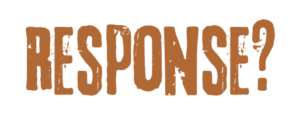 By 2021, tens of thousands of refugees had fled to Sudan. The Sudanese government is now struggling to acquire sufficient resources to accommodate the influx of refugees. In Ethiopia, violence has spread to the Oromia, Amhara, and Benishangul-Gumuz regions. Armed militias are increasing their attacks on minority communities across the country.
By 2021, tens of thousands of refugees had fled to Sudan. The Sudanese government is now struggling to acquire sufficient resources to accommodate the influx of refugees. In Ethiopia, violence has spread to the Oromia, Amhara, and Benishangul-Gumuz regions. Armed militias are increasing their attacks on minority communities across the country.
The international response to the genocide has been woefully insufficient. Both the UN and the African Union have failed to intervene to prevent or mitigate the violence. The complex and fluid nature of the conflict makes relief efforts difficult and dangerous. The escalation of atrocities will only stop with increased international attention and action.
Updated 2021
References
““Dying by blood or by hunger”: The war in Ethiopia’s Tigray region, explained.” https://www.vox.com/22370629/ethiopia-tigray-eritrea-amhara-war-ethnic-cleansing
“Ethiopia.” https://reporting.unhcr.org/ethiopia
“Ethiopia.” https://www.cia.gov/the-world-factbook/countries/ethiopia/
“Ethiopia.” https://www.genocidewatch.com/ethiopia
“Ethiopia.” https://www.hrw.org/africa/ethiopia
“Ethiopia: Amidst hostilities in Tigray, humanitarian situation remains ‘dire’.” https://news.un.org/en/story/2021/04/1089282
“Ethiopia: Events of 2020.” https://www.hrw.org/world-report/2021/country-chapters/ethiopia
“Ethiopia: Genocide Warning, July 2020.” https://d0dbb2cb-698c-4513-aa47-eba3a335e06f.filesusr.com/ugd/7d3d52_3d6d1e80522a41c3be7ac9abb2902b47.pdf
“Ethiopian Orthodox Church head says genocide is taking place in Tigray.” https://www.reuters.com/world/ethiopian-orthodox-church-head-says-genocide-is-taking-place-tigray-2021-05-09/
“Ethiopia: Tepid international response to Tigray conflict fuels horrific violations over past six months.” https://www.amnesty.org/en/latest/news/2021/05/ethiopia-tepid-international-response-to-tigray-conflict-fuels-horrific-violations-over-past-six-months/
“Ethiopia’s Tigray conflict sparks spread of misinformation.” https://www.bbc.com/news/world-africa-54888234
“Ethiopia’s Tigray crisis: The long, medium, and short story.” https://www.bbc.com/news/world-africa-54964378
“Ethiopia Tigray crisis: Warnings of genocide and famine.” https://www.bbc.com/news/world-africa-57226551
“ETHIOPIA – TIGRAY REGION HUMANITARIAN UPDATE.” https://reports.unocha.org/en/country/ethiopia/
“How can the conflict in Ethiopia’s Tigray region end?” https://www.youtube.com/watch?v=qaIHwK0T7eY
“Over 2 million people displaced by conflict in Ethiopia’s Tigray region – local official.” https://www.reuters.com/article/uk-ethiopia-conflict-idUSKBN29B1N7
“‘Practically this has been a genocide’.” https://www.cnn.com/2021/03/19/africa/ethiopia-tigray-rape-investigation-cmd-intl/index.html
“Reported Ethiopia massacre: UN rights chief warns of spiralling situation, war crimes.” https://news.un.org/en/story/2020/11/1077592
“’Two bullets is enough’: Analysis of Tigray massacre video raises questions for Ethiopian Army.” https://www.cnn.com/2021/04/01/africa/tigray-mahibere-dego-massacre-video-cmd-intl/index.html
“What to Know About the Conflict in Ethiopia.” https://www.cfr.org/video/what-know-about-conflict-ethiopia



